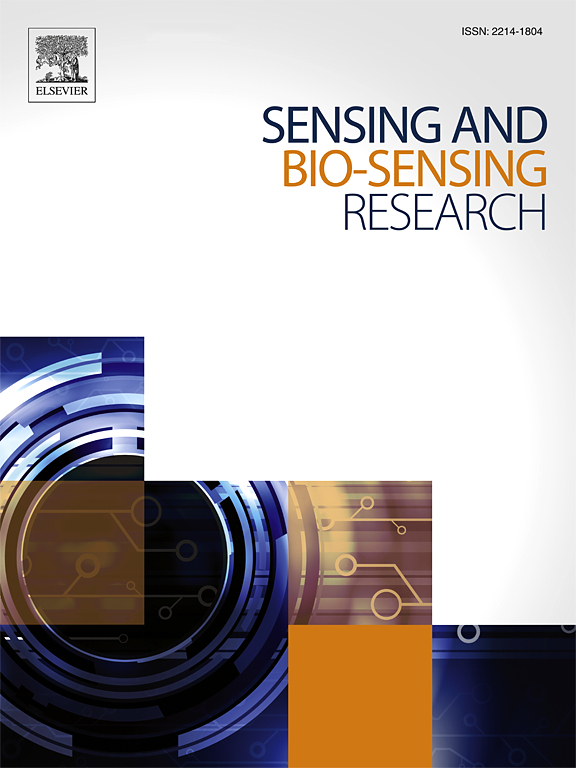智能安全管理系统中基础数据点和线传感器的泄漏检测特性
IF 4.9
Q1 CHEMISTRY, ANALYTICAL
引用次数: 0
摘要
确定了第五代点传感器和膜式传感器的检漏特性,为传感器系统研究提供基础数据。电导率的对比分析表明,氢氧化钠的电导率约为硫酸的0.5至0.6倍,这表明碱性溶液的电导率通常低于酸性溶液。通过将最小测量值设置为10 mA,可以获得稳定的测量结果。在此条件下,点传感器的最低检测浓度至少为0.2%,线传感器的最低检测浓度至少为0.4%。一幅描绘硫酸和氢氧化钠在整个浓度范围内输出值变化的3D图表显示,点传感器的测量值比线传感器的测量值变化更大。在高浓度时,硫酸的测量值始终低于氢氧化钠。电导率和传感器结果之间的相关性导致了预测方程的发展。对于点传感器测量,基于硫酸和氢氧化钠溶液的浓度推导出四次函数,而对于线传感器测量,则使用指数函数。测量值和预测值均证实,点传感器的最低可检测浓度至少为0.2%,线传感器的最低可检测浓度至少为0.4%。这些发现为开发先进的智能安全管理系统提供了有价值的数据。本文章由计算机程序翻译,如有差异,请以英文原文为准。
Leak detection characteristics of point and line sensors for foundational data in smart safety management systems
The leak detection characteristics of fifth-generation point sensors and film-type leak sensors were determined to provide foundational data for sensor system research. A comparative analysis of electrical conductivity revealed that sodium hydroxide had approximately 0.5 to 0.6 times the conductivity of sulfuric acid, indicating that alkaline solutions generally have a lower electrical conductivity than acidic solutions. Stable measurements were obtained by setting the minimum measured value to 10 mA. Under this condition, the minimum detectable concentrations were at least 0.2 % for point sensors and at least 0.4 % for line sensors. A 3D graph depicting changes in output values across the entire concentration range for sulfuric acid and sodium hydroxide showed greater variability in measurements for point sensors than line sensors. At high concentrations, the measurements for sulfuric acid were consistently lower than those for sodium hydroxide. The correlation between electrical conductivity and sensor results led to the development of predictive equations. For point sensor measurements, a quartic function was derived based on the concentrations of sulfuric acid and sodium hydroxide solutions, while for line sensor measurements, an exponential function was used. Both measured and predicted values confirmed that the minimum detectable concentrations were at least 0.2 % for point sensors and at least 0.4 % for line sensors. These findings provide valuable data for the development of advanced smart safety management systems.
求助全文
通过发布文献求助,成功后即可免费获取论文全文。
去求助
来源期刊

Sensing and Bio-Sensing Research
Engineering-Electrical and Electronic Engineering
CiteScore
10.70
自引率
3.80%
发文量
68
审稿时长
87 days
期刊介绍:
Sensing and Bio-Sensing Research is an open access journal dedicated to the research, design, development, and application of bio-sensing and sensing technologies. The editors will accept research papers, reviews, field trials, and validation studies that are of significant relevance. These submissions should describe new concepts, enhance understanding of the field, or offer insights into the practical application, manufacturing, and commercialization of bio-sensing and sensing technologies.
The journal covers a wide range of topics, including sensing principles and mechanisms, new materials development for transducers and recognition components, fabrication technology, and various types of sensors such as optical, electrochemical, mass-sensitive, gas, biosensors, and more. It also includes environmental, process control, and biomedical applications, signal processing, chemometrics, optoelectronic, mechanical, thermal, and magnetic sensors, as well as interface electronics. Additionally, it covers sensor systems and applications, µTAS (Micro Total Analysis Systems), development of solid-state devices for transducing physical signals, and analytical devices incorporating biological materials.
 求助内容:
求助内容: 应助结果提醒方式:
应助结果提醒方式:


